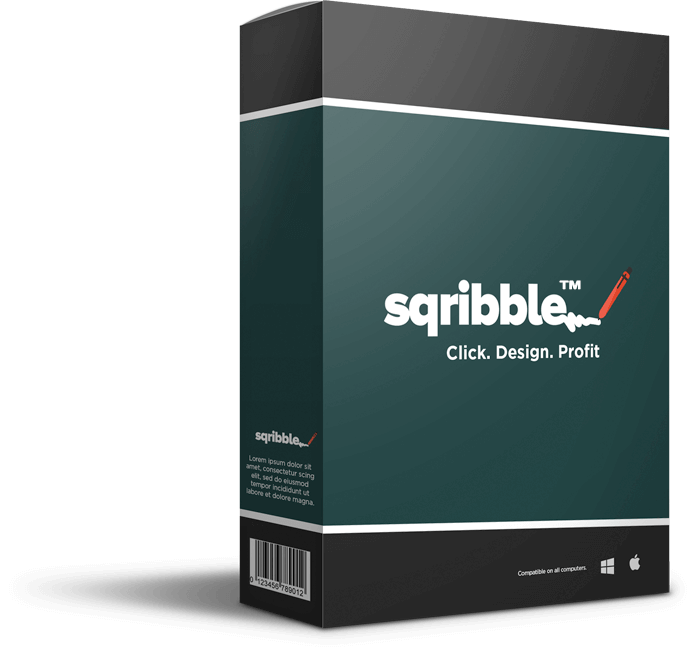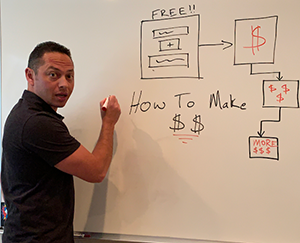Consult with Ease: Personalize Your Customer Stragtegy Using AI written by John Jantsch read more at Duct Tape Marketing
The Duct Tape Marketing Podcast with David Edelman In this episode of the Duck Tape Marketing Podcast, I had the pleasure of interviewing David Edelman, a seasoned digital transformation and marketing expert. As CMO, Edelman guided Aetna (now part of CVS Health) through becoming a digitally oriented, customer-centric brand. He built McKinsey’s Digital Marketing Strategy […]
Consult with Ease: Personalize Your Customer Stragtegy Using AI written by John Jantsch read more at Duct Tape Marketing
The Duct Tape Marketing Podcast with David Edelman
In this episode of the Duck Tape Marketing Podcast, I had the pleasure of interviewing David Edelman, a seasoned digital transformation and marketing expert.
As CMO, Edelman guided Aetna (now part of CVS Health) through becoming a digitally oriented, customer-centric brand. He built McKinsey’s Digital Marketing Strategy Practice and had leadership roles at BCG and Digitas. Repeatedly recognized by Forbes as one of the “Most Influential CMOs in the World” and by AdWeek as one of the “Top 20 Marketing and Technology Executives,” his work has attracted over 1.1 million followers to his LinkedIn blog. Currently, David advises top executives on AI and personalization.
In this episode, we dive into the ever-evolving world of personalization in business, uncovering the game-changing role of AI in redefining how companies connect with their audiences. Edelman emphasizes the importance of creating customer experiences at scale and the competitive advantage that effective personalization has.
Edelman explores the advantages of personalization, while highlighting the ongoing challenges of overstepping boundaries—a pitfall many of us have encountered firsthand. He shares practical examples of how AI enhances customer interactions and tackles concerns about data privacy and the potential discomfort of overly personalized marketing. The conversation also touches on the challenges marketers face in content creation and the need for more thoughtful, effective communication strategies.
Key Takeaways:
- Personalization is about creating customer experiences at scale.
- AI enhances personalization by analyzing customer data.
- The privacy factor in personalization must be managed carefully.
- 70% of consumers are comfortable with data use for value.
- Speed of learning is crucial for competitive advantage.
- Companies often have more data than they realize, but it’s siloed.
- AI can help integrate data from various sources effectively.
- Successful personalization can lead to increased customer satisfaction.
- Content should be bite-sized and easily digestible for consumers.
- Empowering customers with their data can enhance their experience.
Chapters:
[00:00] Introduction to Personalization in Business
[02:59] The Role of AI in Personalization
[06:00] Navigating the Privacy Factor of Personalization
[08:54] Competitive Advantage through Personalization
[12:02] Practical Applications of AI in Customer Experience
[14:53] Content Creation and AI’s Impact
[17:56] Successful Examples of Personalization
More About David Edelman:
- Check out David Eldelmen’s Website
- Connect with David Edelman on LinkedIn
- Grab a copy of Personalized: Customer Strategy in the Age of AI
This episode of the Duct Tape Marketing Podcast is brought to you by:
Oracle
Nobody does data better than Oracle. Train your AI models at twice the speed and less than half of the cost of other clouds. If you want to do more and spend less, take a free test drive at Oracle.
Testimonial (00:00): I was like, I found it. I found it. This is what I’ve been looking for. I can honestly say it has genuinely changed the way I run my business. It’s changed the results that I’m seeing. It’s changed my engagement with clients. It’s changed my engagement with the team. I couldn’t be happier. Honestly. It’s the best investment I ever made.
John Jantsch (00:16): What you just heard was a testimonial from a recent graduate of the Duct Tape Marketing certification intensive program for fractional CMOs marketing agencies and consultants just like them. You could choose our system to move from vendor to trusted advisor, attract only ideal clients, and confidently present your strategies to build monthly recurring revenue. Visit DTM world slash scale to book your free advisory call and learn more. It’s time to transform your approach. Book your call today, DTM world slash scale.
(01:05): Hello and welcome to another episode of the Duct Tape Marketing Podcast. This is John Jantsch. My guest today is David Edelman. He’s a long time advisor on digital transformation and marketing, and as a CMO, David guided Aetna now part of CVS Health through becoming a digitally oriented customer centric brand. He built McKinsey’s digital marketing strategy practice and has also had leadership roles at BCG and Digitas currently advises top executives on AI and personalization, and we’re going to talk about his upcoming book, his new book, personalized Customer Strategy in the Age of ai. So welcome to the show, David.
David Edelman (01:46): Thank you, John. Pleasure to be here.
John Jantsch (01:48): So this may seem like a silly question, but I think it’s probably important to set this baseline to start with. How are you defining in the context of business personalization?
David Edelman (02:00): Yeah, sure. In the early days, and this was really early back in 1989 when I first started playing in this area, before the internet, it was really just focused on marketing, using customer data to target to do a bit more matching of a name. And then in the internet area it became retargeting. What we are talking about now though is with all the AI tools that are available, it is not just about marketing, it’s about a customer experience. It’s about creating experiences at scale that use a customer’s information to give them back value and then to constantly get better as you learn what somebody responds to, what they like, what they tell you about. And it’s a way of competing. It’s actually your value proposition, not just simply the way you try to push sales.
John Jantsch (03:04): So you mentioned AI already. So can we give me some examples of how ai, I mean we went from, like you said, being able to put somebody’s name into an email field, a first name field, and now we’re going to ai, which theoretically can say, Hey, I know every data point in this customer’s history or this customer’s journey, and because of that, I can not just put their name in there, but I can actually, it’s kind of like Amazon recommending, oh, these are books you’re probably going to like type of thing. So what are the big ways that AI is really impacting the approach to personalization?
David Edelman (03:46): Yeah, sure. And it’s not just generative ai, it’s a whole range
(03:50): Of capabilities that are coming together. Let me give you an example and just show how AI plays a role in all of this. So you’ve got the digital natives like Spotify, Uber who work with you, but there’s others who are starting to move into this as well. So for example, a few years ago in the town I was living in Lexington, Massachusetts, they offered an incentive for buying solar panels. And that opened up a floodgate of marketing, just crazy amounts of marketing. But one company sent me a physical mailing that said, you Edelman at this address can save 20% on your annual energy bills. There’s a personalized URL in here that’ll explain how with sungevity type the URL into the computer and I get a Google Earth image of the roof of my house with solar panels superimposed on it down the right rail. They calculate how much energy those panels can generate based on my longitude and latitude, the east west orientation of my roof.
(05:03): They even had tree cover examples in there. And then they use Zillow to get the square footage of my house and use that to calculate how much energy I would use over the course of a year. So they had the numerator and the denominator and that gave them 21.3% savings. So there’s a whole bunch of AI going into that. So they’re interpreting, they’re looking at all of these Google Earth images in our town to try to then figure out which are the ones that could generate at least 20% savings. So that’s not generative ai, that’s more machine learning calculation capability, predictive modeling that’s going into that. Then they used a generative AI capability to generate the roof of my house with the solar panels on top. Then on an ongoing basis, they’re monitoring how much energy I actually generate, and they’re using that to balance load and decide when to sell energy back into the grid. What’s the right time for doing that? Again, that’s predictive modeling. So there’s a whole bunch of capabilities here. And then when I actually talked to the chief marketing officer of Sun Jevity, she was telling me how they constantly test and learn to figure out how to even make this work, and they were using AI capabilities to do multivariate testing, to set up the test cells
John Jantsch (06:40): And
David Edelman (06:40): Manage all of the different variables. So there’s a number of different AI capabilities that are stitching together to make these kinds of experiences possible.
John Jantsch (06:51): So that leads me dangerously close to an idea that I was going to present. At what point does that get creepy? It can know too much. Or maybe more practical example. There are industries healthcare that are highly regulated, right? I mean, so at what point does that its ability to know surpassed my, surpassed the point where it’s a good experience for me,
David Edelman (07:15): The creepiness factor comes up all the time, John, and it’s real, and we’ve got to constantly think about what will make somebody feel uncomfortable. I was chief marketing officer of Aetna, so health insurance company where one of the things we were doing was marketing to people help them to encourage them to do healthier behaviors. So if they could do healthier behaviors, they’d be healthier, they’d save money, we’d save money, everyone would be good. But you have to be super careful about how you’re doing that, how you’re identifying people, what information is shared, the security behind it. We were incredibly vigilant about all of that and doing so in a way that had security guidelines through the whole thing. So I think it’s just critical to think about the customer. Too much of where AI could go is just bombarding people who you think have done a certain kind of behavior and then they’re wondering, how did you know this? You’ve got to take the customer’s perspective. How would they react? How are you adding value? As part of the work that I did with the BCG in writing the book, we surveyed thousands of consumers in the US and other countries. 70% of people said they were comfortable with companies using their data to help them get value, but 75% said they stopped doing business with brands who used it
John Jantsch (08:50): Inappropriately.
David Edelman (08:52): So you’ve got to really think through from the customer’s perspective.
John Jantsch (08:58): Well, and I think that’s probably true of all technology. I mean, if it actually makes a better experience for me or makes it easy for me to do something like online scheduling, I’ll do it all day long. But if they use it as a tool to, so I don’t ever have to talk to you the phone systems and things where you can’t actually talk to somebody when you want to do that. I think that it’s similar with ai, right? We’re always going to want something that adds value. We’re always going to resist something that either creates friction or a bad experience,
David Edelman (09:26): And that’s our whole thing with personalization. It’s about experience that make it simpler, easier, faster, enable you to discover new things.
Testimonial (09:36): It’s
David Edelman (09:36): About empowering the customer, and we talk about that in the book that you have to start by thinking through how can you empower somebody using this information about them?
John Jantsch (09:47): AI might be the most important new computer technology ever. It’s storming every industry and literally billions of dollars are being invested. So buckle up. The problem is that AI needs a lot of speed and processing power. So how do you compete without cost spiraling out of control? It’s time to upgrade to the next generation of the cloud. Oracle Cloud infrastructure or O-C-I-O-C-I is a single platform for your infrastructure, database, application development, and AI needs. OCI has four to eight times the bandwidth of other clouds offers one consistent price instead of a variable regional pricing. And of course, nobody does data better than Oracle. So now you can train your AI models at twice the speed and less than half of the cost of other clouds. If you want to do more and spend less like Uber eight by eight and Databricks Mosaic, take a free test drive@ociatoracle.com slash duct tape.
(10:44): That’s oracle.com/duct tape oracle.com/duct tape. Yeah, so the book presents a lot of examples of personalization that I think a lot of people might look at as, oh yeah, that’s something we ought to be doing that’s clever or that’ll make a better experience. But you really, the main premise of the book is that this is a serious competitive advantage. In fact, you actually have a formula in the book to calculate what personalization might be worth, and one of the key elements of the formula is speed of learning. So you want to take any, that was sort of a question. You want to take any component of that and break it down because you really to focus on the idea of competitive advantage?
David Edelman (11:29): Yeah, absolutely. So one of the most important things about personalization is having data and AI lives off data and you want data to be able to make predictive modeling and to make sharper and more granular and more timely predictions. You also want to be able to just simply know more contextually about your customer. That’s appropriate. And so the formula that we’ve put in, and admittedly it’s a bit of an abstraction, but it’s n which is the number of observations that you have times the velocity, the speed by which you can test and learn and collect more data squared.
John Jantsch (12:17): Because
David Edelman (12:17): The more you can collect data, the more you learn, the more you’re understanding the variations that AI thrives on. AI wants all those variations. It wants to understand the underlying correlations to those variations, and the more you can test and learn, the faster you can get that out the door, the more you can build up your knowledge base. And then the other side of speed that’s important is you can also act faster on it so that when you find out something about someone, often it’s a question of in the moment in real time, well, how fast can you act? That’s a critical area for assessing value. So we say the value from personalization, the advantage you can get is based on how much data you can get on your target customer base and then your speed of refreshing and acting on that knowledge squared.
John Jantsch (13:14): Okay, so what’s the constraint for most companies? I’m guessing it’s n they don’t really have access, right?
David Edelman (13:21): Well, it’s n most companies actually have access to more data than they realize, but it’s broken up all over the company.
(13:30): So they may have some marketing data, customer service data, sales data, product usage data, but they haven’t thought about it from a cross-functional way to bring it together. And AI tools now can actually make the integration of data easier than it ever was before. For example, there’s a tool from a company called Narrative called Rosetta, like the Rosetta Stone, and it looks at one dataset, understands its schema, looks at a second, understands that schema, and writes the code to combine the data sets and normalize them. So companies are using this. The trade desk uses this, for example, for importing data from its clients and mixing it with all its own data to do targeting for personalized, for programmatic buying and others. Pepsi uses this, Nielsen uses this, and it’s a way to leverage the power of AI to bring more data together upon which you can apply ai.
(14:30): So one thing is actually deliberately thinking about how to bring that data together. The second is speed. Most companies take six, maybe even 12 weeks to get programs out the door. And especially if you’re in a business like financial services or healthcare where there are compliance issues, it can take forever, but you can redesign your processes to be faster, still meeting all those compliance hurdles, but it’s a different way of operating. It’s getting people all together in a room with the right kinds of tools to be able to come up with ideas for tests, get them out the door, get everyone together instead of having a waterfall and setting up appointments. Oh, two weeks we can get together. No two minutes we’re together. Let’s just make the decisions. So it’s a different way of operating. So it’s a data mindset and then a focus on speed.
John Jantsch (15:27): Can you give some practical examples? Again, you’re talking about ways in which you would start thinking differently about this, but can you give some practical examples that you’ve seen where people have actually used AI very effectively to create better experiences for customers?
David Edelman (15:45): Yeah, sure. So I mean, one just that we all see, and maybe it’s gone a bit too far, is the Starbucks app. So Starbucks, when you open the Starbucks app in 300 milliseconds, you get a tailored experience that uses AI to know who you are, where you are, you near work, near home, maybe you’re just simply traveling someplace, what time of day it is. So what are you likely to want during that time of day? Do you tend to order food, what you’ve ordered before? Do you order on special, do you have points you can use? And all of that leads to an incredibly simple interface for you to just simply place your order. And there’s examples of that in B2B, Cisco, the food delivery company, S-Y-S-C-O does something very similar. They deliver to eating establishments all over this country, and if you’re a procurement manager for a restaurant, you open your Cisco app. Same kind of thing is happening where the AI is looking at all of those data points and bringing it together. And in the case of Cisco, even knowing what they’ve gotten, the warehouse because it’s food and some things they may want to move and offer on a discount because it might be appropriate for your menu. There’s things like that where you can just see it immediately and it makes your ordering, for example, so much more streamlined.
John Jantsch (17:17): Let’s go back to marketers. One of the biggest frustrations marketers have is that the ever-growing need for content seems to be the beast that they cannot feed enough to. So I think there’s some pretty obvious ways that ai, a lot of marketers, I think are realizing, Hey, AI is great at repurposing, which helps us content at scale. I wonder where you fall on maybe where it is today and maybe where it will be. It seems to me that AI is not very good at producing original content.
David Edelman (17:47): No, not yet. I mean, it depends on your need and the category you’re in. I mean, if you’re just trying to create simple product ads, okay, AI can do that. If you’re trying to create things that have some degree of emotion, there are advances that are making it easier, you should have a human in the loop. I think what AI can do though is unlock a lot of ideation
(18:11): And help you quickly see what something might look like and then you can adapt it. I think the biggest challenge that we all face as marketers from AI is just overwhelming customers because you can create so much more and frankly, so much more crap. And so people are going to start turning it off, they’re going to unsubscribe, and some companies have already started seeing this, and so less is more. It’s got to be smarter about when you’re reaching out, what you’re reaching out with, the way the content actually renders itself versus just simply bombarding the hell out of someone who happened to visit some content on their site.
John Jantsch (18:56): I wonder how, there’s one thing that I don’t think a lot of content marketers talk about, and this is I think both B2B and B2C is I think we sometimes underestimate how the consumers of that content are also using ai. So we write this beautiful 50 page ebook white paper that we spend a lot of time and energy on, and they feed it into chat GPT and say, give me the five things I need to know here. So if that dynamic is as big as I think it is, what does that tell marketers that they need to be doing with their content? Is that just something we’re going to have to learn to live with?
David Edelman (19:33): Well, I think a, it’s something you’ll live with. If you send overwhelming stuff to people, I think again, sending even a 15 page, not 50, but one five even, that’s a lot. So can you make it bite-sized chunks? Can you make it simpler? Videos? I’m a big believer in simple videos. One of the things we did, for example, at Aetna, when you get your health insurance, do you really understand that most people don’t. They’re confused, they don’t understand. So they call into the call center, they go out of network, they’re not happy, and that cost us money. So we use the service that was called Sunday Sky to create personalized videos for every member when they onboarded, you would get John, your specific health plan, who in your family was covered? Who had a primary care relationship with a doctor? If you didn’t, here are five that are near you that are taking new patients. Click here to schedule. That’s a power of content. That’s an experience. 70% of people watch the three and a half minute video, and we got it down to really simple language calls to the call center went down, satisfaction went up. People even opened our emails more often after we sent that.
John Jantsch (20:59): Are there a couple of examples of companies big and small that you see out there that are doing this well?
David Edelman (21:06): Yeah, sure. So I mentioned Cisco, the food delivery company, which I think is really good. Another great example in financial services is Voya. So they do employee benefits and generally you’ve got your 401k and your financial, and then you’ve got your healthcare and you may have personal investments and it’s all over the place and it doesn’t come together. They have invested in intermingling all of that into one interface that they call my voyage, and you can add your own information into it, and then they’ve put AI on it. That is pretty much agnostic, and I’ve seen it in action. It doesn’t bias us towards Voya. It’s just saying, what’s best for you in terms of making decisions of where, for example, to put the next dollar of your benefits, should you be saving in a health savings account? Should you put it in the 401k? And they’ve won most trusted financial service institutions since this has come out. They’ve been growing share, and so they’ve helped people essentially activate their own data, that it was scattered all over and they’ve brought it together, put intelligence on top of it and helped you make sense of it and use it to make decisions. That’s a powerful example of using personalization, just change the value prop.
John Jantsch (22:36): Awesome. Well, David, I appreciate you taking a few moments to stop by the Duct Tape Marketing Podcast. Where would you invite people to connect with you and obviously find a copy of personalized customer strategy in the age of ai?
David Edelman (22:48): Yeah, sure. So you can easily connect with me on LinkedIn and you can find the book personalized on Amazon. It’s right there. It’s actually number one in customer relations. It was one of the top new releases last week, so we’re very excited about it. I would love to hear stories of new ideas that the book sparks.
John Jantsch (23:09): Awesome. Well, again, appreciate you taking a few moments. Hopefully we’ll run into you on these days out there on the road. David.
Sign up to receive email updates
Enter your name and email address below and I’ll send you periodic updates about the podcast.
Recommended Story For You :

How To Make $3493 Commissions Without Doing Any Selling

Successful dropshippers have reliable suppliers.

People Think I Use A Professional Voiceover Artist. NO! I Just Use Speechelo!

Make Money Testing Apps On Your Phone Or Tablet

Make More Money or Lose Everything

Sqribble Is The ONLY eBook Creator You’ll Ever Need.

Work & Earn as an Online Assistant

Create Ongoing Income Streams Of $500 To $1000 Or More Per Day

It's The Internet's Easiest Side Business.




